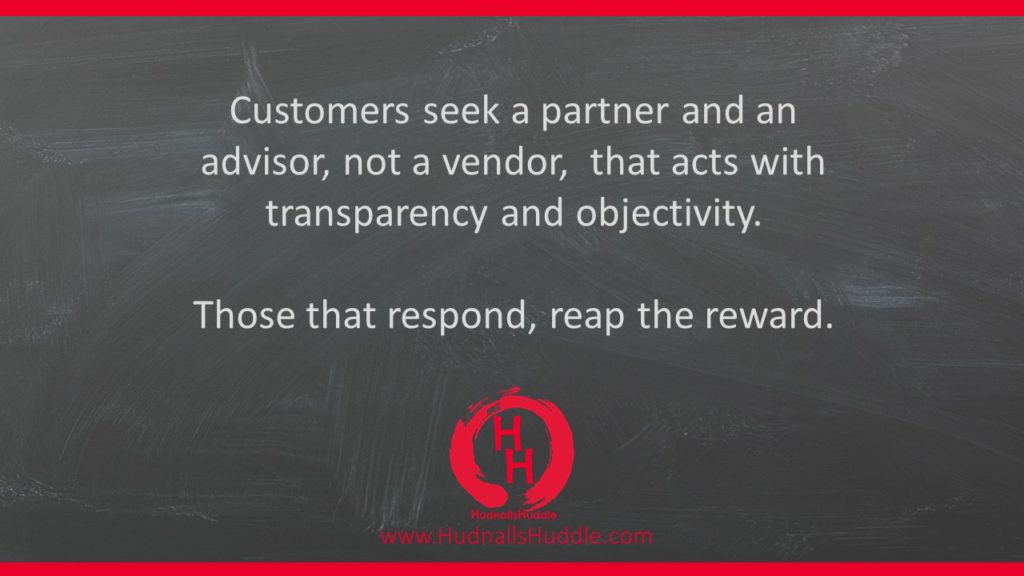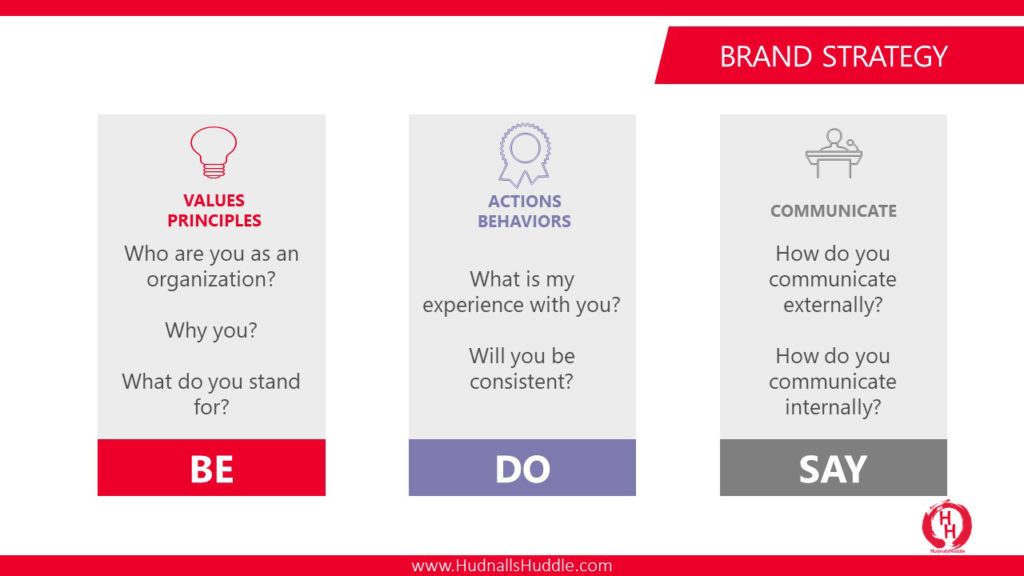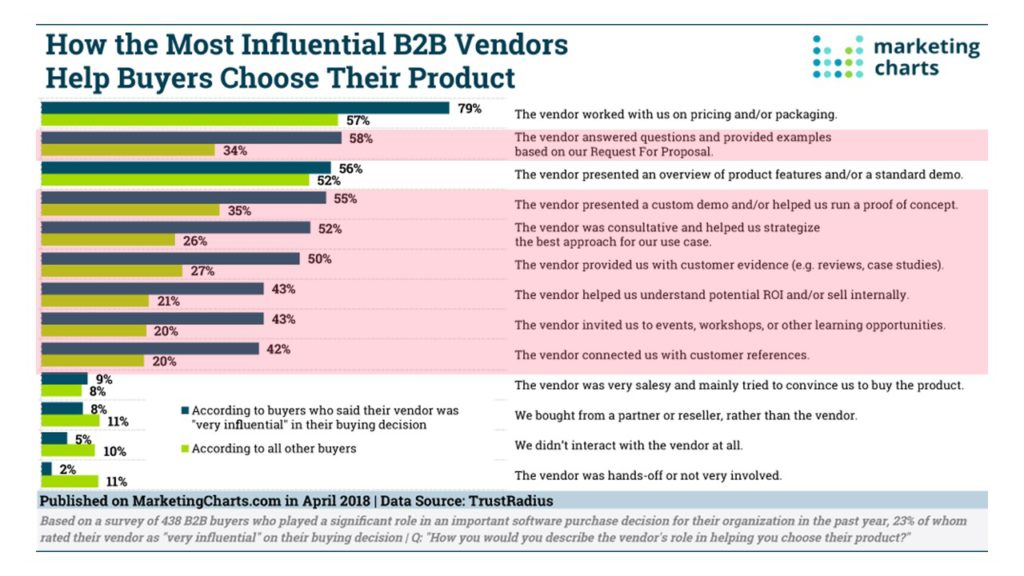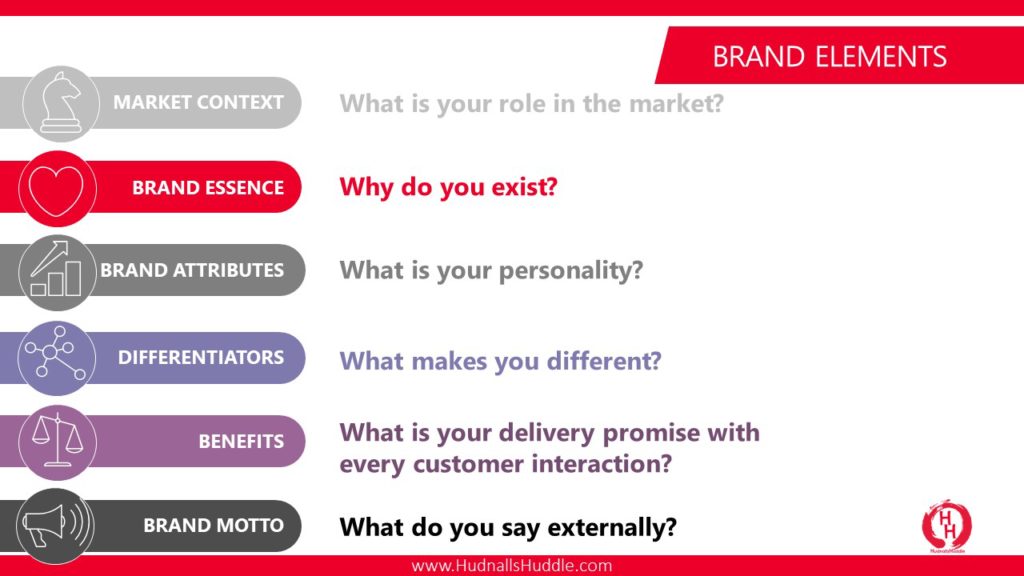S Y N O P S I S
Let’s start with your perception of brand and what it is. Most would respond with any of the following:
- Logo
- Color Palette
- Design, Pictures
While all are a piece of the aesthetic portion of brand, they are only a small portion of brand. In this day of DIY, many will go to a designer, ask for a logo and call branding done. Where are the files for print, web, slideware, etc.? Where is your color palette? Color, black and white, transparent, lock-up with the company name, etc. Where are the variations you will require for your wide variety of communication channels?
This simple aspect quickly begins to represent an unpolished visual and lack of attention to detail to those you communicate with and how will I be treated as a customer? I learned quickly in my career if the proposal made a thump on the desk when dropped, looked sharp and paid attention to details, like spelling and consistency, that was half the battle.
FIRST IMPRESSIONS MATTER – YOU ONLY GET ONE CHANCE AT IT
Does the first metric get your attention?
Does it scare you that 25% of your potential competition is considered “very influential”?
Are you in the 25% of “very influential” vendors?
What will it take to get in the “very influential” club?
What does your website look like? What about the content? What does it say about you? How do you communicate with prospects, customers and the market – are all communications consistent? Does it convey the impression you desire? Does it portray “me too” or market leader? Do your teams follow through and convey the same impression? Does your team convey the same message or does a prospect hear a different story depending upon the interaction?
65% of prospects also state they spend more time “getting ready” to speak to the vendor than they expected to spend on the whole buying process. This tells me 2 things: 1) they are doing their homework and 2) they are inundated and sifting through a sea of irrelevant content.
62% of prospects reward vendors a high quality sale (premium product or service) when they act as a consultant helping them map a strategy, solution in an “influential” manner (Source: Harvard Business Review – The New Sales Imperitive).
BRAND
Brand is more than the logo, color and design and is difficult to desribe as it is intangible, the emotion in how your customers feel about you and your products and/or services. >85% B2B technology prospects need to trust the brand before making a decision and this is driven largely by how you present yourself and are perceived by the market based upon your actions and the emotion they drive.
Developing a brand strategy should first be aligned with your business strategy and then it can be summed up by 3 small words:
BE – DO – SAY
A brand is a living entity – and is enriched or undermined
cumulatively over time, the product of a thousand small gestures
Michael Eisner – DisneyYour brand is what other people say
you when you’re not in the room.
Jeff Bezos – AmazonThe more you engage with customers, the clearer things
become and the easier it is to determine what you
should be doing.
John Russell – Harley-DavidsonA Brand is the emotional response your company receives.
The emotion behind what someone feels, sees, tastes, etc. when
they come across your brand.
A memorable logo is just the beginning.
Richard Branson – Virgin
B – E
The first step to gaining trust with your prospects is to know who you are, “why” you and the ability to state your position. What are your values, what do you stand for, what is your position in the market and what makes you different. This is the foundational element by which the next two are dependent upon. This is also the element that is most often bypassed because it is the most difficult to do. How you will act and communicate is rooted in the position you define.
Failing to Plan is
Planning to Fail
Alan Lakein – Author
Defining and aligning to your position is the most difficult element because there will be many voices and opinions. The key to success is defining the process upfront and looking at it in terms of “alignment”, rather than 100% “agreement”. Success hinges upon complete “alignment” upon execution. Rogue positions only undermine the brand and business.
As an analyst, it is the first step in determining how committed a vendor is to their market and customers and the easiest to uncover. A vendor can rank high in product capability and vision, but can often fall short in their ability to execute. The ability to execute is rooted in the vendor’s foundational definition of who they are and complete consistency in all communications, regardless of channel.
Prospects want to trust their vendors and gaining that trust is to be confident in knowing who you are and consistently expressing that story and values – across the board and without exception. This also provides the ability to be objective and transparent with prospects about your business, further gaining the trust they seek to give in building a relationship.
D – O
Once you have a clear position, now it’s time to execute and engage with your prospects and customers. It is your consistent actions that will reap the rewards of advocacy in the market. The experience with your pre-sale team has to be followed through post-sale with contracts, finance, executive, service, support and engineering. No doubt there will be a hiccup from time to time, it’s how you recover that defines the experience.
Prospects are seeking partners and influencers, not vendors. 71% are seeking new ideas and possibilities to drive stronger results to improve their business and are seeking these influencers earlier in the buying cycle. 69% are seeking primary research relevant to their business and yet only 23% state they have vendors that meet the qualification of “very influential”. This is great news. It is an opportunity for competitive advantage for those who execute being the influencer well, but it means changing the dialog to focus on the prospect and not you.
It is a gift, not a curse, that prospects are seeking consultants and influencers to guide their buying process, but it is harder to execute. It is difficult to tailor the buying process to the requirements of the prospect, but it illustrates a partnership and builds trust that will drive advocacy. The process of tailored engagements can be manufactured into a “cookie cutter” process and that in and of itself becomes the ingrained way you do business. This becomes the “Butterfly Effect” in the market that grows your business.
The TrustRadius – The 2018 Buying Disconnect report provides this interesting chart illustrating vendors look at the buying cycle from their perspective, while prospects are seeking consultants to help them strategize the best approach. Being the influencer puts the vendor in an extremely favorable position to drive the sale that requires developing a relationship of unique trust.
Do you want to be known as the vendor who worked with us on pricing and packaging and did a standard demo well or the consultative influencer?
50% of the “very influential” vendors bridge the areas with the greatest gaps between what the vendor delivers and what the prospect seeks and values during the buying cycle:
- Being a consultant and influencer
- Knowing their business, helping them to overcome obstacles proactively
- Tailoring the experience to their requirements
- Providing real-world evidence
- Fostering customer relationships for sharing experiences
- Working with them to build their strategy
- Building their Business Case and ROI that will help them sell the purchase internally
“Doing” this consistently well will illustrate your ability to execute on your “Promise” and garner you advocates in the market that will benefit you exponentially going forward. However, to keep this advocacy, you must continue to nurture these relationships throughout the interactions with your business.
S – A – Y
Prospects state that >80% of vendors:
- Talk too much about themselves
- Act like vendor – Not a partner
- Do not present objective information
- Act transactionally versus relationship oriented
“Being” part of the 23% who influence their sales will require a change in what you “Say” and the content that is delivered during the buying cycle to focus on the prospect and their internal challenges during the cycle, rather than your requirements during the vendor defined buying cycle. Look for a future post discussing the shifting Buying Cycle.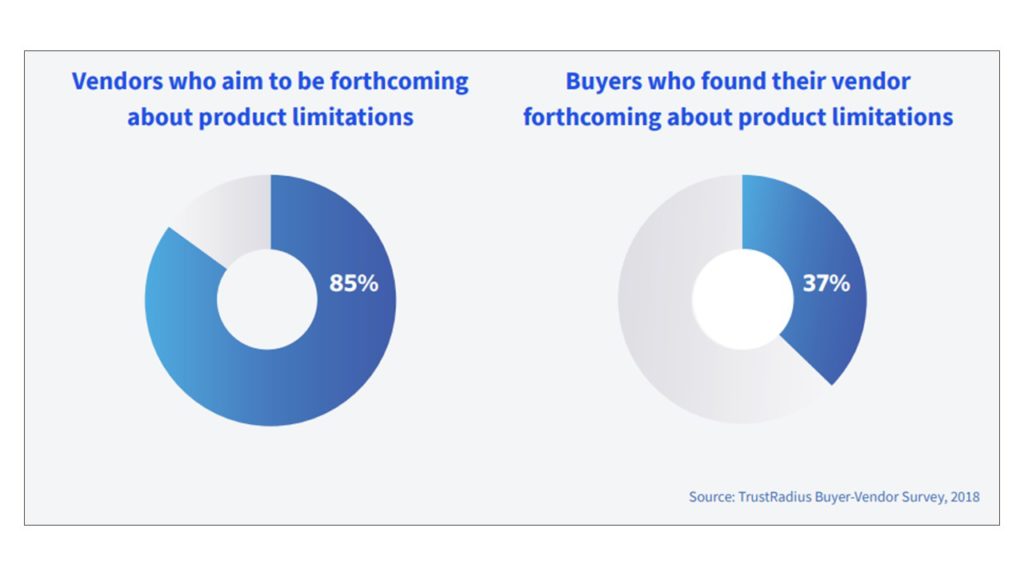 Another interesting disconnect uncovered in the TrustRadius – The 2018 Buying Disconnect is the level of objectivity and transparency executed by the vendor versus the prospect’s perception. Garnering the unique role of influencer will require gaining trust in communications and, again, changing the communications to focus on prospect buying cycle challenges.
Another interesting disconnect uncovered in the TrustRadius – The 2018 Buying Disconnect is the level of objectivity and transparency executed by the vendor versus the prospect’s perception. Garnering the unique role of influencer will require gaining trust in communications and, again, changing the communications to focus on prospect buying cycle challenges.
Internal communicates and what you“Say” as a business is as important internally as it is externally. In order to build consistent external communications, internally the team must know who you intend to “Be” and be aligned to “Doing” their part to support the external execution and communications with utter consistency. This will change prospect perception and advocacy.
Better understanding your prospects will improve your communications and content. This is an area that requires great improvement. Factual product and/or service information is a necessary evil, however, becoming a market influencer and thought leader brings great benefits from both prospects and the market (e.g., journalists, analysts).
Developing content from the perspective of prospects, their challenges and solutions they seek provides you press as earned media and turns your business into a market influencer. Blogs tend to be littered with product details and how-to’s, when they should be multi-faceted:
- Defining market trends
- Defining market solutions
- Providing empirical evidence of success
- Technical solution information
Your website and regular, consistent posting is an untapped avenue that represents great gains. Prospects rank this content as currently the least effective, however, it can become another competitive advantage leading to “earned media” opportunities.
LET’S WRAP THIS UP
It is no coincidence that the largest portion of a Business Plan is the Sales and Marketing section setting the foundation for your brand and defining:
- Who are you?
- What is your positioning in the market?
- How will you go to market?
- Who are the competitors?
- What is the addressable market?
- What portion of the TAM (Total Addressable Market) can you attain?
- What channels will you utilize?
BRAND ELEMENTS
TAKE AWAYS
Defining your Brand Strategy and executing it is a clear differentiator in a market seeking influencers. 84% of prospects indicate they are willing to act as advocates and participate on advisory boards, however, only 21% have served on an advisory board. Again, not an easy task, however, one that provides your business with competitive advantage.
- Define your position – who to you choose to “Be”
- Execute on who you are and be your prospect’s influencer – Competitive Advantage
- Communicate as an influencer to prospect’s and the market – Competitive Advantage
- Use your customers as advocates
- Change the buying cycle conversation – Know your prospect’s internal challenges and help them proactively
- Build the business case
- ROI
- Line up customer sharing round tables
- Demo solving their challenges – not your product
- Stop inundating them with unobjective collateral / content
* * * * *
Now I ask you: Does Your Brand Strategy Matter?
Share your comments below or connect with me!
A related post:
Sources used for the analysis and statistics:
Sword and the Script – Trust is a Flywheel of B2B Marketing and a Key Point of Differentiation
Harvard Business Review – The New Sales Imperitive
Marketing Charts – B2B Buyers Want Partners, Not Vendors
Marketing Charts – Marketing to IT Buyers: 2 Key Insights
Marketing Charts – Suprise! B2B Buyers Say They Want to Hear From Vendors Early in the Buying Process
Marketing Charts – Here’s What the Most Influential B2B Vendors Are Doing to Win Business
TrustRadius – The 2018 Buying Disconnect
Photo credits: Pexels, Don Owsley, Black and White Colorado Mountains, (CC0 1.0 Universal Public Domain), TrustRadius and MarketingCharts




